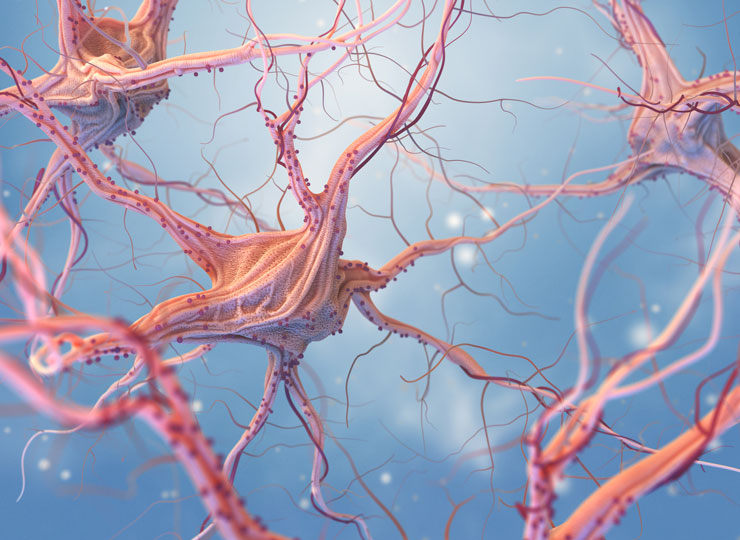
January 21, 2020
Scientists have long known that Alzheimer’s disease is marked by the abnormal accumulation of two main types of proteins in the brain. One of these proteins — known as beta-amyloid, a small fragment of a larger protein called APP — clumps together to form hard-to-remove, barnacle-like plaques that permeate the brain. Another — called tau — when modified in a certain way, also aggregates and fills affected brain cells with spaghetti-like strands called neurofibrillary tangles.
But while scientists know that beta-amyloid and tau are associated with varying levels of toxicity, and that both proteins clearly have a strong potential to worsen Alzheimer’s, they still don’t fully understand the precise roles of these proteins in the onset and course of the disease. In term of disease progression, for example, it is unknown whether these proteins cause the disease, or whether their presence is a byproduct of some other disease process going on in the brain.
Beta-amyloid is a hallmark of Alzheimer’s, specific to the disease, whereas tau is also found in other brain ailments. For this and other reasons, much research has focused on beta-amyloid in recent years. New drugs have been developed that aim at blocking the protein itself, its small aggregates or the amyloid plaques it forms. But repeatedly, most of these drugs have not shown benefit in slowing or halting the progression of Alzheimer’s disease.
Now a new study suggests that tau may play a bigger role in Alzheimer’s onset than previously thought. Using a sophisticated type of brain scan known as a PET scan along with a radioactive dye that attaches to and flags tau in the brain, scientists studied the brains of 32 patients in the early stages of Alzheimer’s disease. They found that tau tangles build up in certain areas of the brain that are critical for memory or language early in the course of the disease, and that these areas then undergo wasting and shrinkage.
“You could really predict which brain regions were going to get damaged just on the basis of the tau scans we took at the beginning of the study,” said Renaud La Joie, the lead researcher on the study and a postdoctoral fellow at the University of California, San Francisco, Weill Institute for Neurosciences. “Where the tau was built up at the beginning of the study was very predictive of where the actual brain shrinkage was going to happen in the next year or two.”
The findings, published in Science Translational Medicine, suggest that toxic tau proteins may play a key role in the brain degeneration of Alzheimer’s disease. They also provide hope that new drugs that target tau tangles, rather than beta-amyloid, might provide benefits for people with Alzheimer’s patients, the study authors said.
“The match between the spread of tau and what happened to the brain in the following year was really striking,” said study author Dr. Gil Rabinovici, of the UCSF Memory and Aging Center. “Tau PET imaging predicted not only how much atrophy we would see, but also where it would happen. These predictions were much more powerful than anything we’ve been able to do with other imaging tools, and add to evidence that tau is a major driver of the disease.”
“No one doubts that beta-amyloid plays a role in Alzheimer’s disease, but more and more tau findings are beginning to shift how people think about what is actually driving the disease,” Dr. La Joie said.
The findings also underscore how much scientists have yet to learn about the underlying causes of Alzheimer’s disease. Basic research is critical to understanding who gets Alzheimer’s, and to developing promising new treatments for the disease. The Fisher Center for Alzheimer’s Research Foundation continues to fund essential research into the underlying cases of Alzheimer’s disease including tau projects, research that may one day prove key to finding a cure for an illness that affects more than five million Americans, and many more worldwide.
By ALZinfo.org, The Alzheimer’s Information Site. Reviewed by Marc Flajolet, Ph.D., Fisher Center for Alzheimer’s Research Foundation at The Rockefeller University.
Source: Renaud La Joie, Adrienne V. Visani, Suzanne L. Baker, et al: “Prospective longitudinal atrophy in Alzheimer’s disease correlates with the intensity and topography of baseline tau-PET.” Science Translational Medicine, Jan. 1, 2020











